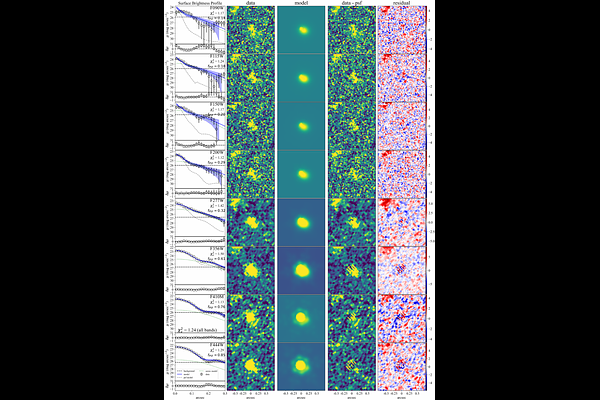JWST Insights into Narrow-line Little Red Dots

JWST Insights into Narrow-line Little Red Dots
Zijian Zhang, Linhua Jiang, Weiyang Liu, Luis C. Ho, Kohei Inayoshi
AbstractJames Webb Space Telescope (JWST) has revealed a population of red and compact objects with a unique V-shape SED at z >= 4 known as Little Red Dots (LRDs). Most of the LRDs with existing spectral observations exhibit broad Balmer lines and are thus likely to host active galactic nuclei (AGNs). Here we present a study of LRDs with no broad H-alpha component. Our sample consists of five LRDs at z~5 with H-alpha line widths of about 250 km/s. They are selected from 32 LRDs that have NIRSpec high- or medium-resolution grating spectra covering H-alpha. During our construction of the sample, we find that approximately 20 percent of the LRD candidates previously selected do not show red continuum emission but resemble the V-shape spectra due to strong line emission. Compared to normal star-forming galaxies, narrow-line LRDs tend to have relatively higher H-alpha line widths and luminosities. If these LRDs are dominated by galaxies, our SED modeling suggests that they are dusty, compact star-forming galaxies with high stellar masses and star formation rates (SFRs). Alternatively, if their SEDs are produced by AGNs, the inferred central black hole masses (MBH) are in the range of 10^5 to 10^6 solar masses, placing them at the low-mass end of the AGN population. They may represent an early stage of super-Eddington growth, where the black holes have yet to accumulate significant masses. With large measurement uncertainties, these black holes appear slightly overmassive relative to the local MBH-Mstar relation, but consistent or undermassive with respect to the MBH-sigma and MBH-Mdyn relations. We further find that nearly half of the high-redshift broad-line AGNs exhibit V-shape SEDs. (abridged)